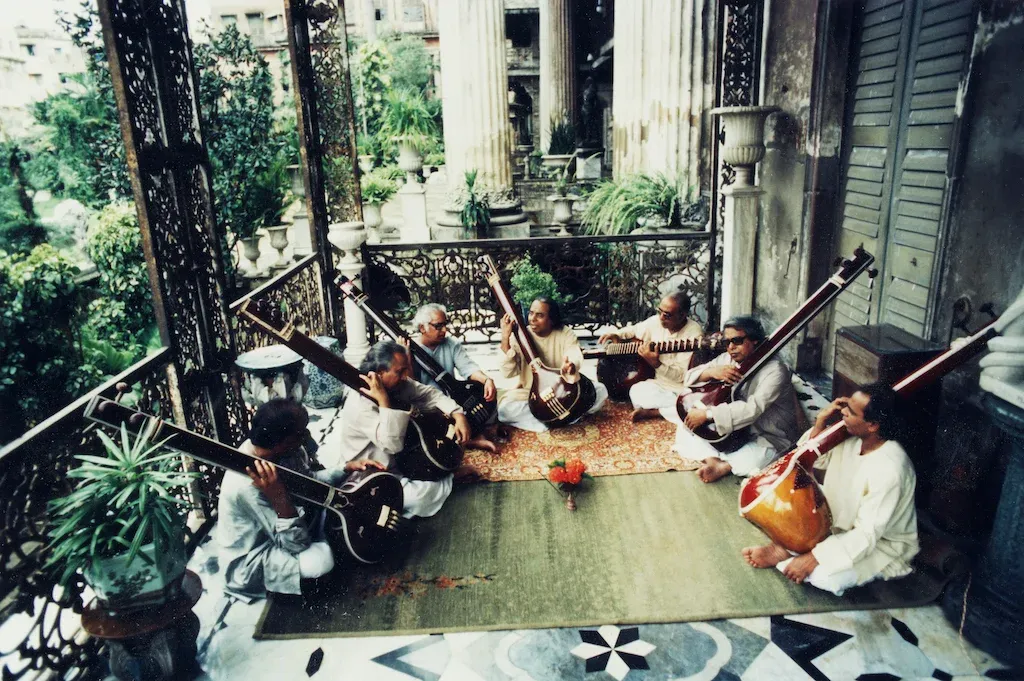Gharanas: Preserving and Celebrating the Rich Tradition of Indian Classical Music

The concept of gharanas is a cornerstone of Indian classical music, embodying the preservation and transmission of musical heritage through generations. Originating from the Sanskrit word “Griha,” meaning house, a gharana represents a distinct school or lineage of music, characterized by a unique style, philosophy, and repertoire. These schools of thought have played a pivotal role in nurturing and evolving the art form, ensuring that its rich tradition continues to thrive in contemporary times.
Historical Background and Evolution
Origin and Definition
The formation of gharanas can be traced back to the Mughal era, particularly during the reign of Emperor Akbar in the 16th century. Akbar’s court musician, Tansen, is often considered a progenitor of this tradition. His disciples and their descendants established distinct musical lineages, each developing a unique style and repertoire. Over time, these lineages solidified into gharanas, each named after the place where they originated or the founder who established them.
Role in Preservation
Gharanas have been instrumental in preserving the nuances and subtleties of Indian classical music. Through the guru-shishya parampara (teacher-student tradition), knowledge is passed down meticulously from one generation to the next. This system ensures that the technical skills, stylistic nuances, and philosophical underpinnings of the gharana are maintained with fidelity.
Core Elements of Gharanas
Stylistic Features
Each gharana is distinguished by its unique approach to raga interpretation, ornamentation (alankars), and rhythmic patterns (layakari). These stylistic features are deeply ingrained in the teaching methodology and performance practice of the gharana.
- Raga Interpretation: The manner in which a raga is developed and explored can vary significantly between gharanas. This includes the choice of specific notes, the order of their presentation, and the emotional expression (rasa) associated with the raga.
- Ornamentation: Different gharanas employ distinct types of ornamentation to embellish the notes. These alankars add depth and texture to the music, making each performance unique.
- Rhythmic Patterns: The use of rhythm (layakari) is another distinguishing feature. Gharanas have their own rhythmic complexities and variations, adding a unique flavor to their performances.
Philosophical Underpinnings
Beyond technical aspects, gharanas are also characterized by their philosophical approach to music. This includes the aesthetic principles (rasa theory), spiritual dimensions, and the overall artistic vision that guides the musicians of the gharana.
Prominent Gharanas in Hindustani Classical Music
Vocal Gharanas
- Gwalior Gharana: Considered the oldest and one of the most influential vocal gharanas, the Gwalior Gharana emphasizes clarity of notes, extensive use of taans (fast, intricate passages), and a systematic approach to raga development. It was founded by Nathan Pir Baksh and gained prominence through musicians like Vishnu Digambar Paluskar.
- Kirana Gharana: Known for its slow, meditative alap and emphasis on the purity of swaras (notes), the Kirana Gharana was founded by Abdul Karim Khan and Abdul Wahid Khan. The gharana’s style is marked by its focus on the emotional and spiritual expression of ragas.
- Agra Gharana: With roots in the Dhrupad tradition, the Agra Gharana combines robust and powerful singing with intricate rhythmic play. Founded by Ghagghe Khudabaksh, it has been popularized by musicians like Faiyaz Khan.
- Patiala Gharana: This gharana is known for its elaborate and expansive taans, intricate ornamentation, and a robust, resonant voice quality. Founded by Fateh Ali Khan and Ali Baksh, it has been carried forward by legendary singers like Bade Ghulam Ali Khan.
Instrumental Gharanas
- Maihar Gharana: Founded by Allauddin Khan, the Maihar Gharana is renowned for its innovative approach and blending of various musical influences. It has produced legendary musicians like Ravi Shankar (sitar) and Ali Akbar Khan (sarod).
- Etawah Gharana: Also known as the Imdadkhani Gharana, it was founded by Imdad Khan. This gharana is known for its sitar and surbahar players, emphasizing intricate fingering techniques and a blend of melody and rhythm. Vilayat Khan is one of its most celebrated exponents.
- Benaras Gharana: Primarily associated with the tabla, the Benaras Gharana was founded by Ram Sahai. It is characterized by its powerful, resonant bols (strokes) and the ability to produce a wide variety of tonal effects. Renowned tabla players like Kishan Maharaj hail from this gharana.
Prominent Gharanas in Carnatic Classical Music
Vocal Gharanas
- Thanjavur Gharana: This gharana is known for its emphasis on bhava (emotion) and sahitya (lyricism). Pioneered by the Trinity of Carnatic music—Tyagaraja, Muthuswami Dikshitar, and Syama Sastri—the Thanjavur Gharana places a strong emphasis on the expressive quality of music.
- Mysore Gharana: Renowned for its balance between bhava and technical prowess, the Mysore Gharana has produced legendary musicians like M. L. Vasanthakumari and Mysore T. Chowdiah.
Instrumental Gharanas
- Tanjore Gharana (Mridangam): Founded by Narayanaswami Appa, this gharana is noted for its clarity of strokes and adherence to traditional patterns. It has been carried forward by illustrious mridangam players like Palghat Mani Iyer.
- Lalgudi Gharana (Violin): Established by Lalgudi Jayaraman, this gharana is famous for its lyrical and expressive style, closely emulating the human voice. It has greatly influenced violin playing in Carnatic music.
Contemporary Relevance and Global Influence
Preservation and Innovation
While gharanas are rooted in tradition, they are not static. Each generation of musicians contributes to the evolution of their gharana, introducing innovative techniques and expanding the repertoire. This dynamic process ensures that the gharana remains relevant and vibrant, adapting to contemporary contexts while preserving its core principles.
Global Influence
Gharanas have significantly contributed to the global appeal of Indian classical music. Renowned artists from various gharanas have performed worldwide, collaborating with musicians from different genres and traditions. This cross-cultural exchange has enriched the global music landscape and introduced diverse audiences to the depth and beauty of Indian classical music.
Conclusion
Gharanas are more than just schools of music; they are living traditions that embody the cultural, philosophical, and artistic heritage of Indian classical music. Through meticulous preservation and innovative evolution, gharanas continue to nurture and celebrate the rich legacy of this art form. As they inspire and influence new generations of musicians and audiences, gharanas remain a vital and dynamic force in the world of music, ensuring that the timeless tradition of Indian classical music thrives in the contemporary era.





